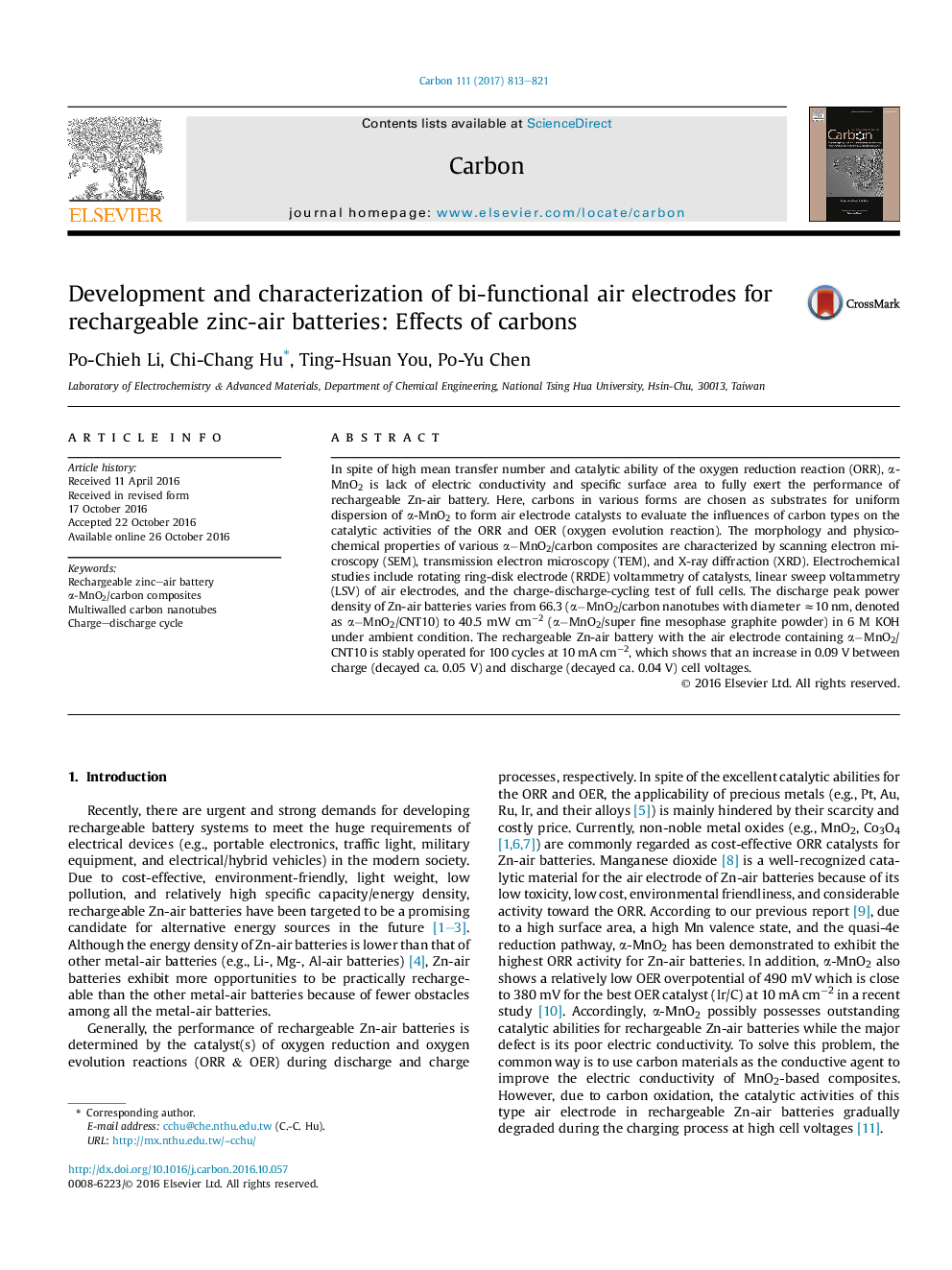| Article ID | Journal | Published Year | Pages | File Type |
|---|---|---|---|---|
| 5432676 | Carbon | 2017 | 9 Pages |
In spite of high mean transfer number and catalytic ability of the oxygen reduction reaction (ORR), α-MnO2 is lack of electric conductivity and specific surface area to fully exert the performance of rechargeable Zn-air battery. Here, carbons in various forms are chosen as substrates for uniform dispersion of α-MnO2 to form air electrode catalysts to evaluate the influences of carbon types on the catalytic activities of the ORR and OER (oxygen evolution reaction). The morphology and physicochemical properties of various αâMnO2/carbon composites are characterized by scanning electron microscopy (SEM), transmission electron microscopy (TEM), and X-ray diffraction (XRD). Electrochemical studies include rotating ring-disk electrode (RRDE) voltammetry of catalysts, linear sweep voltammetry (LSV) of air electrodes, and the charge-discharge-cycling test of full cells. The discharge peak power density of Zn-air batteries varies from 66.3 (αâMnO2/carbon nanotubes with diameter â10 nm, denoted as αâMnO2/CNT10) to 40.5 mW cmâ2 (αâMnO2/super fine mesophase graphite powder) in 6 M KOH under ambient condition. The rechargeable Zn-air battery with the air electrode containing αâMnO2/CNT10 is stably operated for 100 cycles at 10 mA cmâ2, which shows that an increase in 0.09 V between charge (decayed ca. 0.05 V) and discharge (decayed ca. 0.04 V) cell voltages.
Graphical abstractThis study demonstrates that both α-MnO2/CNT10 and α-MnO2/CNT20 can sustain 100 charge-discharge cycles with a minor increase in the voltage gap (0.09 V). The inner layers of MWCNTs could still keep conductive because the outer layers effectively protected them from the oxidative damage during the charging process.Download high-res image (341KB)Download full-size image
